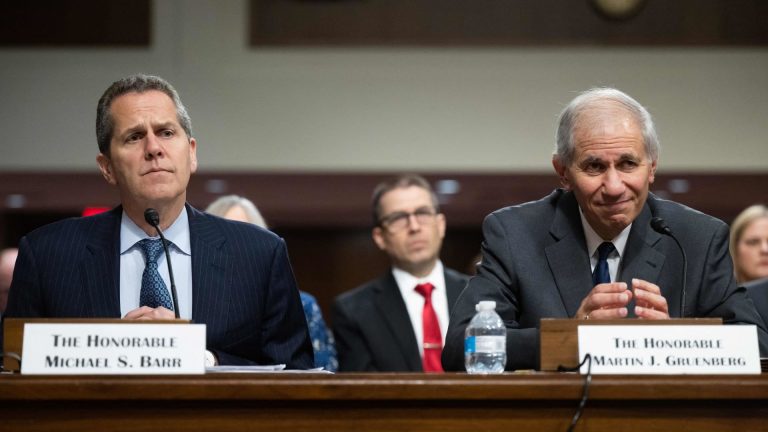
[ad_1]
Michael Barr (L), Vice Chair for Supervision at the Federal Reserve and Martin Gruenberg, Chair of the Federal Deposit Insurance Corporation (FDIC), testify about recent bank failures during a US Senate Committee on Banking, House and Urban Affairs hearing on Capitol Hill in Washington, DC, May 18, 2023. (Photo by SAUL LOEB / AFP) (Photo by SAUL LOEB/AFP via Getty Images)
Saul Loeb | Afp | Getty Images
U.S. regulators on Thursday unveiled a sweeping set of proposed changes to banks’ capital requirements to address evolving international standards and the recent regional banking crisis.
The changes, designed to boost the consistency and accuracy of regulation, will revise rules tied to risky activities including lending, trading, valuing derivatives and operational risk, according to a notice from the Federal Reserve, Office of the Comptroller of the Currency and the Federal Deposit Insurance Corporation.
As expected, the changes will broadly raise the level of capital that banks need to maintain against possible losses, the agencies said. While the heightened requirements apply to all banks with at least $100 billion in assets, the changes are expected to impact the biggest and most complex banks the most, they said.
“Improvements in risk sensitivity and consistency introduced by the proposal are estimated to result in an aggregate 16% increase in common equity tier 1 capital requirements for affected bank holding companies,” the regulators said in a fact sheet.
The industry’s tier 1 common capital levels measure an institution’s presumed financial stability should a recession or trading blowup occur. The biggest U.S. banks recently weathered a severe recession scenario while maintaining required capital levels in the Fed’s latest stress test.
In response to the failure of Silicon Valley Bank in March, the proposal would force more banks to include unrealized losses and gains from certain securities in their capital ratios, as well as compliance with additional leverage and capital rules.
That effectively eliminates a regulatory loophole that regional banks enjoyed; while larger firms with at least $250 billion in assets had to include unrealized losses and gains on securities in their capital ratios, regional banks won a carveout in 2019. That helped mask deterioration in SVB’s balance sheet until investors and depositors sparked a deposit exodus in March.
This story is developing. Please check back for updates.
[ad_2]
Source link